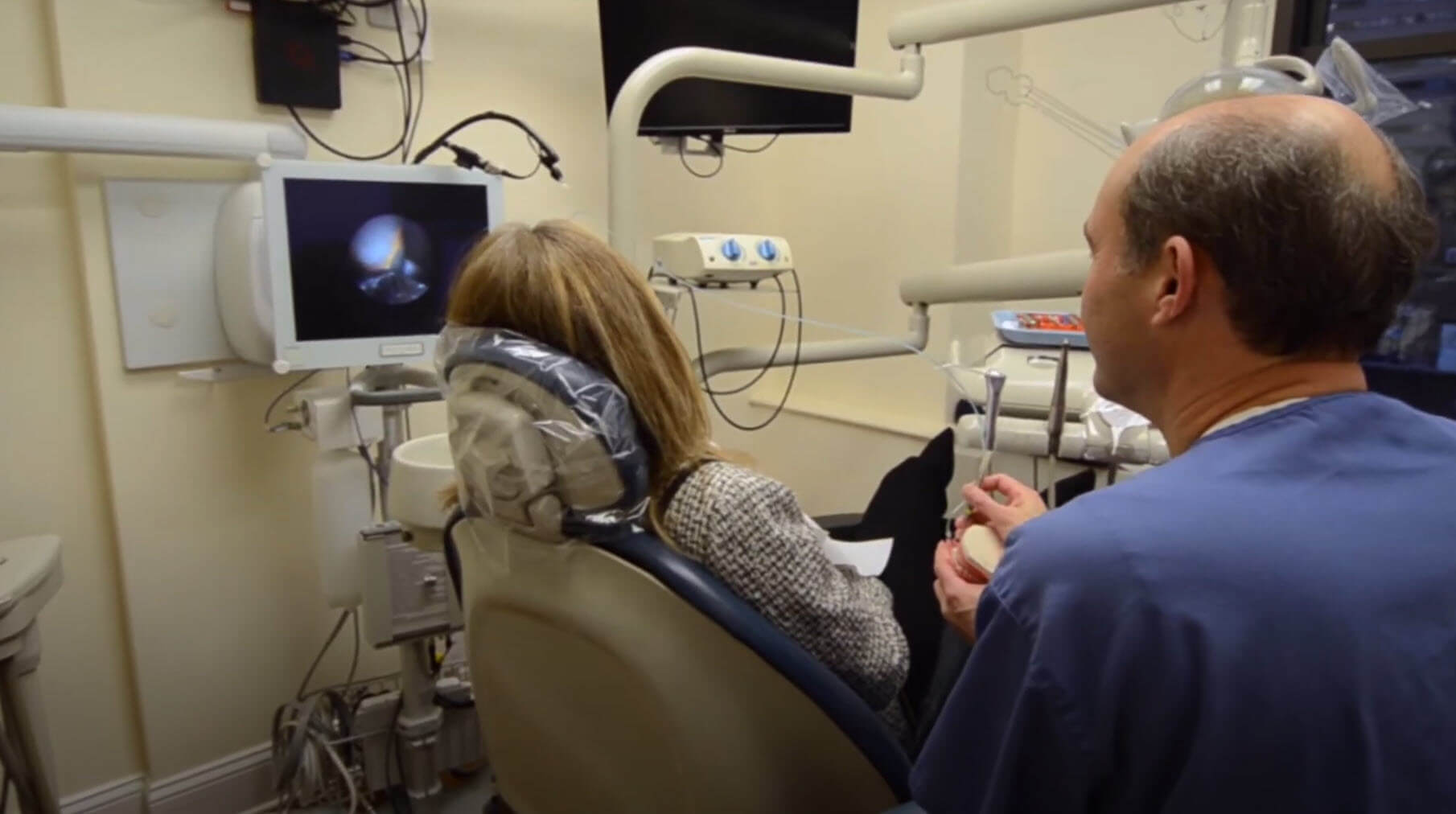Periodontitis is a term used by periodontists to refer to periodontal disease that has advanced significantly – commonly referred to as severe gum disease. Periodontitis is a serious gum infection that can damage your gum tissue, however, if you keep ignoring it, it can also damage the bone supporting your teeth, as well. Periodontitis can cause teeth to loosen or lead to tooth loss since the gum tissue begins to detach from the teeth. This detachment of gum tissue creates spaces called pockets where bacteria can build up and eventually cause an infection. Treatment of periodontitis could be a combination of various treatments whose aims are to help you eliminate bacteria and infection, prevent tooth loss, and regenerate gum tissue and bone.
Treatment Techniques for Periodontitis
Scaling and Root Planing
Scaling and root planing are treatment techniques to help individuals with milder cases of periodontitis. These techniques are used to remove plaque, tartar, and bacteria through a deep cleaning process that focuses on tooth roots. Scaling basically scrapes off the build-up of tartar above and below your gum line. However, root planing is performed to smooth over your roots’ surfaces, making it harder for plaque to stick to the roots in the future. Most patients can find relief and see improvement from this treatment.
Scaling and Root Planing Using a Perioscope
Traditional scaling and root planing, which is the standard level of care for periodontal disease, is a blind procedure! With the traditional process, periodontists are not able to see the tartar on the root. This means that it is not very effective at removing plaque, tartar, and bacteria. However, Dr. Kisser is one of the few periodontists who use the Perioscope to conduct scaling and root planing.
The Perioscope is a powerful dental endoscope/microscope that can display a magnified image (24-48x) on a video screen, allowing him to clearly see any tartar you may have directly on the root of the affected tooth in large detail. He can then precisely and proficiently remove the tartar in a more efficient and thorough manner. Using traditional periodontal instruments, up to 30% of tooth surfaces can still have tartar – which means you’re still at risk of your case of periodontal disease progressing. This significantly limits the goal of non-surgical pocket reduction and generally leads to the recommendation for surgical treatment in the future. Traditional surgical techniques often result in significant gum tissue recession, loss of gum tissue between teeth (which is often unsightly and a food trap), and root sensitivity.
Laser Treatment
If you have advanced periodontitis, you may require LANAP Laser treatment. It is a gentle and highly effective approach. Dr. Scott Kissel offers patients LANAP laser treatment conducted with a microscope. He is one of the first periodontists in New York to specialize in this unique treatment method that combines the advantages of the microscope with LANAP. Used together, these instruments allow for the removal of more tartar and significantly increase the likelihood of reattachment of gum tissue or regeneration of bone to your tooth.
Dr. Kissel’s use of the Periscope, a powerful surgical microscope that can magnify an image (24-48x) and project it on a screen, allows him to see below the gum line in much more detail. As a result, he is able to efficiently remove much more tartar and plaque enabling your body to have a much better healing response and decrease the need for surgery. The LANAP laser treatment also stimulates new bone growth around existing teeth, adding support and strength. This means that you won’t be losing teeth.
Gum Grafting
If your periodontitis cannot be treated without the need for gum graft surgery then Dr.Kissel utilizes a minimally invasive microsurgical technique to repair gums and resolve periodontitis. He is able to obtain tissue from the roof of your mouth to place over your receded gums. The surgery results in the once exposed tooth root being covered again by soft tissue, allowing the gum to function properly. Surgery can also address cosmetic issues such as gray coloring of the gums, covering up crown margins, and thickening up the gum tissue that surrounds dental implants or crowns.
Dr. Kissel uses microsurgery techniques during gum grafting surgeries because it makes the procedure easier to perform and allows patients to heal faster. It also makes the surgery less painful for patients. In fact, Dr. Kissel’s patients report that with microsurgery techniques, they experience less discomfort from the surgery and heal faster and without complications compared to patients who use traditional surgical instruments and techniques. Microsurgery also significantly reduces the risk of complications since the better one can see, the more knowledge one acquires resulting in careful manipulation of tissues and critical anatomy.
Consult With Dr. Kissel About the Most Effective Treatment for Your Periodontitis
Whether you’ve been informed by your general dentist, or you think you are experiencing periodontitis and need professional treatment, Dr. Kissel is ready to help you. Schedule a periodontal exam with Dr. Kissel at his Manhattan, New York clinic at (212) 702-9088 or contact him online. Dr. Kissel will develop a personalized gum disease treatment program to save your teeth and help you reclaim your beautiful smile.
